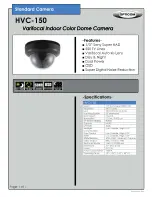
V1.02
Thom Hogan’s Complete Guide to the Nikon D300
Page 258
•
Some flash situations.
While the matrix meter is generally
very good with on-camera flash, it does less well with off
camera flash.
Remember, you have the Histogram information and
Exposure Compensation to help “tune” your exposures (see
“Options for Evaluating Exposure” on page <263> and
“Exposure Compensation” on page <307>).
Using other metering methods as your primary choice boils
down to three basic situations:
1.
In very bright light (snow, sand, etc.), the matrix
meter’s ability to measure light accurately can be
compromised by its upper brightness limit. Center-
weighted metering may give you slightly more
accurate results, assuming you’re using this method
correctly.
2.
You’re coming from a film camera that sets exposure
using the center-weighted method and you’re more
comfortable keeping the same system on your new
DSLR. If that’s the case, by all means change the
metering system of your D300 to Center-weighted and
set the system to match the circle size from your
original camera (some earlier Nikon SLRs used a
smaller center circle, some larger than the 8mm the
D300 uses). Be aware, however, that a Custom
Settings reset (see page <519>)—will change the
center-weight circle size back to 8mm if you’ve
changed it using Custom Setting #B5 to better match
your older camera.
3.
You understand exposure and tonal values well and
encounter situations where a precise setting for a
particular object is necessary (metering off a gray card
so that a particular object falls to a specific differential
exposure value; for example, you want a very dark
















































